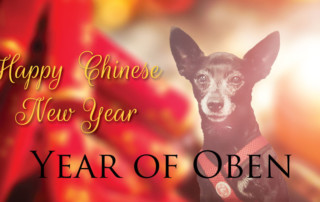LOOSE TRANSCRIPT from interview with Sharlene Habermeyer from Good Parenting, Brighter Children:
One of the unique things about Chinese medicine is its sense of time. We are looking to better our lineage and our society over a span of generations. (Compare this to our modern culture where we can only hold our attention for 30 seconds).
This means we take time to nurture and cultivate the best in our children. Chinese medicine allows us to identify how different children see the world and how we can maximize their own innate potential.
These are two concepts that are unique to Chinese culture: 1) how do we cultivate each successive generation over time? and 2) how do we optimize the chances for this individual within the greater whole? Chinese Personality Typing serves as a guide to accomplishing both.
Chinese Personality Typing or “Face Reading” (Mien Shiang, miànxiàng, 面相) developed as a way to quickly identify a person’s personality, health, and behavioral tendencies. This was useful when dealing with strangers to gauge if they could be trusted or were a good fit to employ. With children, Mien Shiang helps parents assess their childrens’ potential gifts and challenges.
I won’t go into depth with 5 Element theory here, but it is important to have a basic understanding. The 5 Elements are a mnemonic device used to predict interactions and outcomes in numerous areas of life; from agriculture, to medicine, to war strategy. Each element represents a long list of characteristics.
We translate the Chinese term wǔ xíng (五行) as “5 Elements” and also the “5 Phases” to connote their transformational nature. The elements are constantly interacting and transforming into one another. They do so in two positive ways: they generate each other and curb each other’s excesses:

The 5 Elements interact negatively when they over-control or when the cycle goes in reverse and they insult each other. We experience this in human relationships when people over control and stifle others creating friction and disharmony.

Instead we want to keep children in balance using the two positive cycles above. We are nurturing them and curbing their excesses. This keeps kids in that optimal middle zone: not stifling their growth and not giving them insufficient boundaries where they push back on us.
EARTH CHILD
The Earth child is naturally harmonious. Physically, they are very grounded with proportionately shorter legs and longer torsos. The face shape is round. Typically, the features are smaller and more localized in the center with a wider face. The lower part of the face is rounded. They tend to have thicker lips and a stronger jawline. There is a tendency to be overweight, but even when they are not overweight, there is more muscle and fleshiness to them. They are not lean children.

Earth rules digestion. On a mental level, it also rules the intellect. These are very practical children. They tend to be very moderate in their interactions. They like harmony, practicality, and routine. Routine is very important for Earth children.
Earth is grounded. If they keep the same element through adulthood (which sometimes we do and sometimes we change), then they will be very grounded, practical adults. Earth types tend to do very well in real estate and finance.
Earth types are natural networkers. Their ability to bring people together makes them critical members of networking groups, charities, or within a business when you want to nurture a united group culture. Earth children display these behaviors early on by collecting other children and bring kids together. They have that natural tendency to create harmony within a social group and within the family.
The challenge for Earth children is their tendency to fret and worry. They do not do well with change or disruptions to their routine. When they experience change, it triggers anxiety as they try to re-establish that balance and grounding. In parenting an Earth child, you need to provide guidance on how to adapt when change inevitably happens in their world.
Health-wise, Earth children tend towards digestive problems. They tend to over eat and can be emotional eaters. Food is the drug of choice for Earth children and adults.
[Sharlene asked a question on leadership]
There are two types of Earth: the more yin, Soft Earth and the more yang, Mountain Earth. Most leaders (at least in modern Western culture) are either Mountain Earth or Wood types. Winston Churchill is an example of Mountain Earth. I would categorize both Hillary Clinton and Donald Trump as having a good amount of Mountain Earth.
Mountain Earth types collect people, but they are dominant within these groups. Whereas Soft Earth is the earth mother who collects people to nurture them. Mountain Earth views their constituents as their family; as people they are protecting and connecting with, but also leading. Both subtypes of Earth manifest in men and women. Every successful organization has Earth people acting as the glue keeping the group together.

This is an example of an Earth child. You see the roundness in the face. The features are smaller and collected in the center. Earth adults tend towards double chins or stronger jaw lines, and more fleshy lips. The energy is in the lower part of the face, but in children tend to manifest more as like the roundness of the face.
THE METAL CHILD
Metal children are quite opposite in appearance, body type, and nature. They are lean and delicate-looking. The skin has a distinctive sheen to it. The face exhibits prominent bone structure and high cheek bones. Fashion models tend to have significant Metal element exhibited in their tendency towards thinness, natural grace, and bone structure that is well-suited to photography.

Metal rules the lungs. Children tend to have lung, skin, and immunity issues. They may have the “asthmatic chest” which is slightly sunken. Whereas Earth is fleshy, Metal is very lean and thin. They have very little muscle tone and fat on their bodies. Their limbs tend to be longer.
On a mental level, Metal gives us a sense of individuality. It says, “I have my boundaries, this is where I start and end, and this is where you start and end.” There is a distinct sense of containment and separation from the outside world. Metal people like to have some space. They do not want people infringing on their boundaries.
The tech industry is largely comprised of Metal predominant types. In technology workers have their own space. There is much less social interaction forced upon them in their work environment. Metal children gravitate early on to activities that require precision and containment. They like things like ballet, track and field, building things, or computers. They do not like being forced into the roughness of the world.
Metal children have many gifts. They are detailed, idealistic, and disciplined which are traits that naturally breed success. Yet their tendency towards perfectionism can keep them from realizing their potential and keep them from enjoying life.
Typically, you do not need to push these children to perform. They are self-motivated and self-disciplined. Metal will feel the pain If they don’t perform to their own standards, they do not need someone cracking the whip and making them go to bed and study. Rather, they need to know when to stop and when to have fun and when and how to balance their lives.

This is emblematic of a Metal child: a ballerina, perfect hair, perfect everything. These are the kids that you can put on their clothes in the morning and they will look not like a mess at the end of the day. They will be able to keep their clothes clean.
Note, we are not one thing. We are more balanced. When we see someone exhibiting extreme behavior, they have a lot of one (dysfunctional) element, but none of us would be functional if we didn’t have all five elements. As I am describing the five elements, understand that you and your child have all those aspects, but one of them or two of them tend to be predominant.
Most often you’ll see two elements predominant in a person and that gets a little bit more involved because then you get into, how are those elements interacting with within that person? And that gets really interesting, but just to keep things simpler, I’m trying to describe people extremes of what they are.
Metal children tend to have immunity issues so they’re going to have more lung issues come up. And they’re also going to have a tendency towards skin issues such as eczema.
It is really important for Metal kids to feel safe and connected. You are going to have to put more energy into socialization, connecting with others, and not being cliquish. Metal often feels comfortable in a little group and they don’t want to go outside of it. This is the opposite of the Earth Child, which is very gregarious. Whereas Earth is driven to connect, Metal is driven to separate. The grief of this separation is a key theme in the lives of Metal children and adults.
THE WATER CHILD
The Water element is the biggest challenge to identify because water takes the shape of whatever container it is put in. It does not have defined boundaries. Its boundaries are defined by what is around them.
Physically, Water children tend to be more fleshy, like Earth, but they don’t have a distinctive shape. The face is amorphous. The body has more energy in the hips and the lower abdomen. Even in boys and men, they tend to have more hips then other elements. Water tends to be more soft and curvy. It is very difficult for them to get toned.

The Water element rules the kidneys, it rules development, and it rules the will, as in will power. Water children tend towards issues with developmental stages. There might be early hormonal issues. For example, they might enter puberty too early or too late. Or earlier, as in the case of one of my cousins, where one of his testicles didn’t descend when he was born. There can also be issues with mental development not occurring on the “normal” schedule. These leads into an overarching Water theme: they take a meandering path towards their goals and milestones.
One of the gifts of Water children is that they are incredibly imaginative. They think outside of the boundaries of normal thought. Einstein is an example of a Water person; someone who was completely out of the boundaries of what he was taught.
Water children are visionaries. They are wise early on as children. Their challenge is with structure and boundaries because their nature is boundless. Having this expansive world view, it is very difficult for them to be on a certain track. Time is a foreign concept and they struggle with being on time and meeting deadlines.
This receptivity to input and expansiveness is overwhelming, especially to children. Thus fear is a major challenge for Water. Fear of the dark and of water are common phobias.
Physically, Water children tend towards ear infections.
As a parent of a Water child, you want to lovingly and kindly create a structure. They need boundaries; not in the sense that Wood needs boundaries to learn to contain their tendency to invade the space of others. Water needs to learn the concept of healthy boundaries so they can internalize the concept. Otherwise, it will be very difficult to adapt to a schedule, which all functional adults must do. For example, explaining, “you need to get to school by 8:00 in the morning, so no daydreaming. At 6:30 am you need to get your clothes on, etc.” Just having the patience; knowing that their brains don’t work in a methodical way. It is harder for them to grasp the structure.

This is an example of a Water child. The biggest tell for Water type children and adults are these big dreamy eyes. The rest of the face can be difficult to distinguish from Earth. They are both fleshy, but Water carries the energy in the lower cheeks more than in the jawline. However, when you see those big receptive eyes, you know there is significant Water.
THE WOOD CHILD
This is the element people get most excited about as dysfunctional Wood is the easiest to start seeing in the people around us. Wood rules the liver and the part of the psyche that wants to expand outward. Unbalanced Wood is highly visible.

Physically, the Wood element type is going to be rectangular with the energy moving straight up. The energy tends to get stuck in the shoulders. Both boys and girls tend to have wider shoulders and more energy concentrated in the upper part of the body. Wood types are sinewy with good muscle development, even as children. Even if Wood gets overweight, it drops weight easily.
Wood is courageous. These kids are the explorers. The ones climbing trees and pushing their limits all the time.
Wood children also tend to have a very strong constitution. Health-wise they do not get sick often and recover quickly if they do. Wood children do tend to have a lot of injuries because they are always into things. They might be exploding things. They might be running around climbing things they shouldn’t be; getting into fights, etc. This is where they tend to get hurt. You might have more broken bones.
On a mental/emotional level, Wood struggles with anger and control issues. These kids have a lot of passion and anger and as a parent you want to foster the passion part, teaching them to channel that anger energy into positive energy.
I’ve heard motivational speakers talk about using your anger; to take it and transform it into something positive in your life. They are really speaking to Wood people, because it doesn’t work for other element types. Wood gets charged by and runs on that anger energy. Wood children need to learn how to use that anger to further their passion. This is truly turning their challenge into their gift.
So when your Wood child gets really angry about something that is truly unfair, ask them, “how can you change it?” They may still need to comply in the moment, but you can counsel them to harness the anger they are feeling and fuel your action steps to make a change in the world around you to make things better for yourself and for other people. This is a way to cultivate positive Wood leadership. More than any other element, Wood must learn to channel their energy positively or else it will come out destructively on the rest of society. Either way, their energy will be focused outwardly and visibly.
[Sharlene asked about Wood parents with Wood children.]
When you have a Wood parent with a Wood child it gets interesting. Children of our same element bring up our unresolved issues as they are working out how to be in the world. There tends to be more of a power play when you have a Wood parent and child because both of them respond to conflict and uncertainty by taking control of the situation. You hope that there is a parent of another Element to balance things out and play referee. If the Wood parent has not resolved their own anger and control issues it can get ugly because Wood people will not back down.
[Sharlene commented on some of the disharmony she experienced with her Fire and Wood sons.]
With siblings there is competition and other factors beyond their 5 Element Typing.
Also, it is really important to teach empathy and compassion to Wood children because a lot of what teaches us compassion are our own weaknesses, limitations, and failures. Because wood children have a stronger constitution, it can be harder for them to understand why other people can’t do what they do. Wood bounces back better than the other elements, both physically and emotionally. They are good survivors. They are able to put on their blinders and go forward to what they want. They don’t register if they make people angry and cause chaos around them. They’re going where they’re going.
Other elements can’t do it the way Wood can. And so a Wood person may not understand why the Earth person is worrying about a big job change because they like routine or why to Fire person has their heart broken because someone doesn’t like them. The Wood person is like, just move forward. And they don’t realize that not everybody can. But if you can teach empathy to a Wood child, you can have a phenomenal adult. Someone who is a leader, who is compassionate, and takes care of people who are weaker. Someone who is a really compassionate leader. I mean, that is the best of both worlds.

[Sharlene commented about a mellowing out of her Wood son over time.]
I find that especially for Wood people, having children balances them because it is such a strong instinct to protect your kid and just experiencing how vulnerable children are. I’ve seen it a lot in my friends and patients when they have children. Something shifts in their makeup and they’re able to develop more compassion at that point.
THE FIRE CHILD
Physically, the Fire body is more slight. They have longer legs, longer arms, and fingers and they tend to have less muscle and fat. The energy radiates from the heart.

The face has a triangular shape; either a heart-shaped or diamond-shaped face. The facial features have points and peaks like arched eyebrows or eyes that turn upward at the outer corners, an upturned nose, dimples, or pointy elf ears.
Fire rules the heart and it rules the spirit and the mind. Fire children are creative and loving. It is very important for them to feel a heart connection and to feel loved by those around them. They can be very charismatic. These are the kids that will be singing and performing at a very early. They also use their humor to uplift those around them.
Fire is naturally empathic. When others are hurt they feel it and want to lift everybody up. For example, a lot of comedians have a similar story where there was a lot of hardship in their childhood and they would use jokes to make people happy or to avoid getting beaten up. So there is this need to uplift people around them with entertainment. These are natural artists and entertainers.
The challenge is that all this energy can be scattered. Fire is by nature uncontrollable, even to itself. Scattered energy is also superficial; unable to go deep. Children can suffer from ADHD. They may have trouble settling down at night so they have chronic insomnia. The vulnerability of the Fire heart is a challenge. They can stay awake all night because they are over-sensitive to what people are feeling around them. It is difficult for them to shut that off so they can get very anxious.
Health-wise, Fire tends to overheat, as with a tendency to develop high fevers. Later on in life there might be heart problems. Their health is strongly affected by their emotions. Fire can literally die of a broken heart.
We talked about before how Fire and Wood complement each other. Wood gives power and groundedness to Fire, while Fire lightens up Wood and brings it more into expansion and fun versus anger and control. This is what happens when healthy Fire and Wood come together. Of course, it doesn’t always go well, especially with siblings. This is true of work relationships, creative projects, and marriages and in romantic relationships as well.

This is an example of a Fire child. They tend to be messy and wild. Not like the metal child who is perfect and still. There is a lot of movement with Fire children. They cannot sit still. This can trigger adults around them that want them to be still. Both Fire children and adults get stifled because naturally move outward and go here and go there and other people can get very annoyed with that. Fire types get yelled at a lot, and unlike Wood, they take it to heart.
As a parent you need to guide Fire children to learn to contain themselves and learn appropriateness. It is a real challenge for parents. How do you allow them to really cultivate that creativity and that movement and also learn how to fit into society and be able to have structure and focus in their lives?
[Sharlene asked if Fire has a strong jaw line?]
Fire has angles and points. There is a lot of upward and outward movement. It is common to have a pointed chin, but the chin and jawline do not have the power that Wood or Earth elements have. They don’t have the strength in their features. Wood has a strong chin, strong nose, and strong eyebrows. There’s more strength to their features. Earth and Water are more substantial.
I want to thank Sharlene Habermeyer and her work at Good Parenting, Brighter Children.























